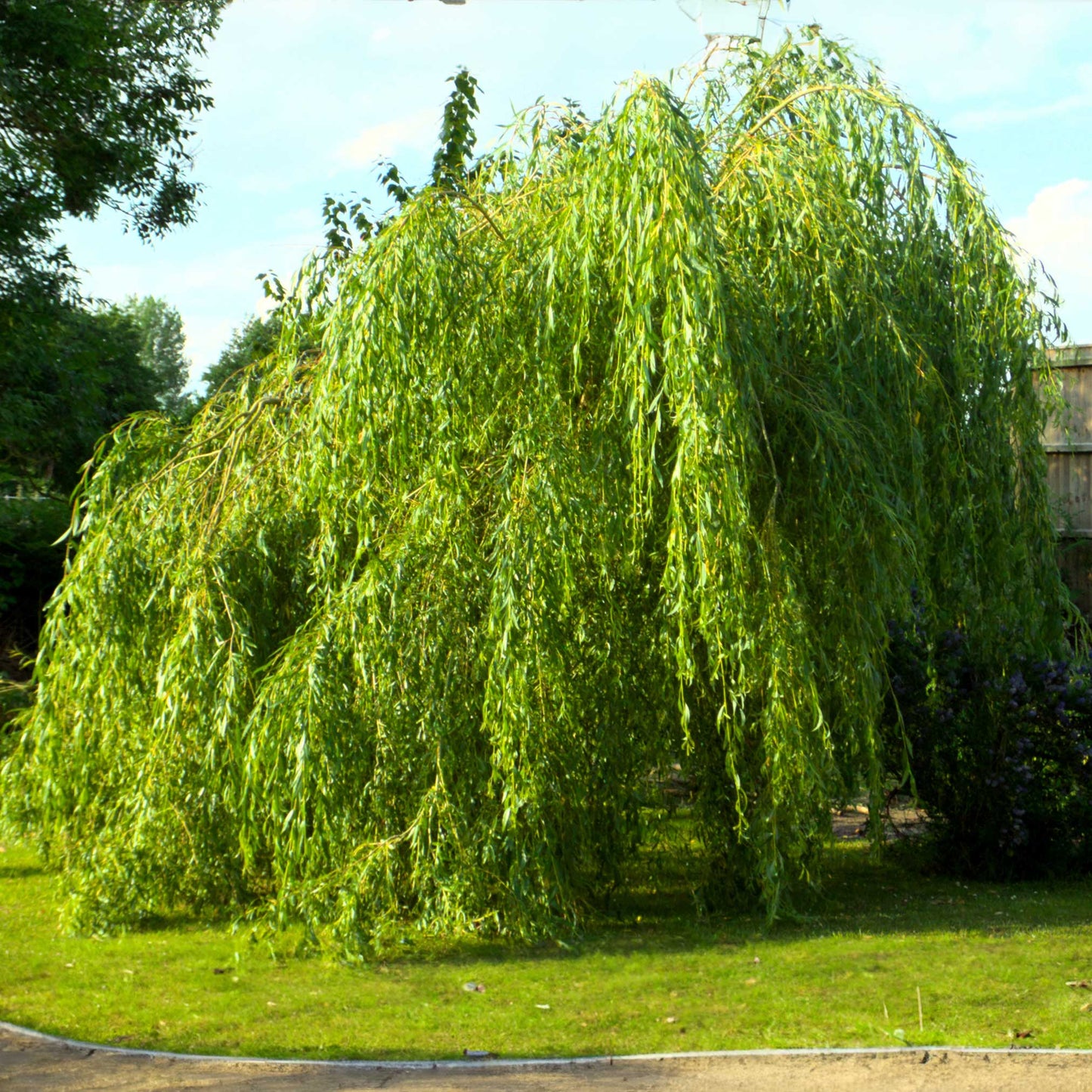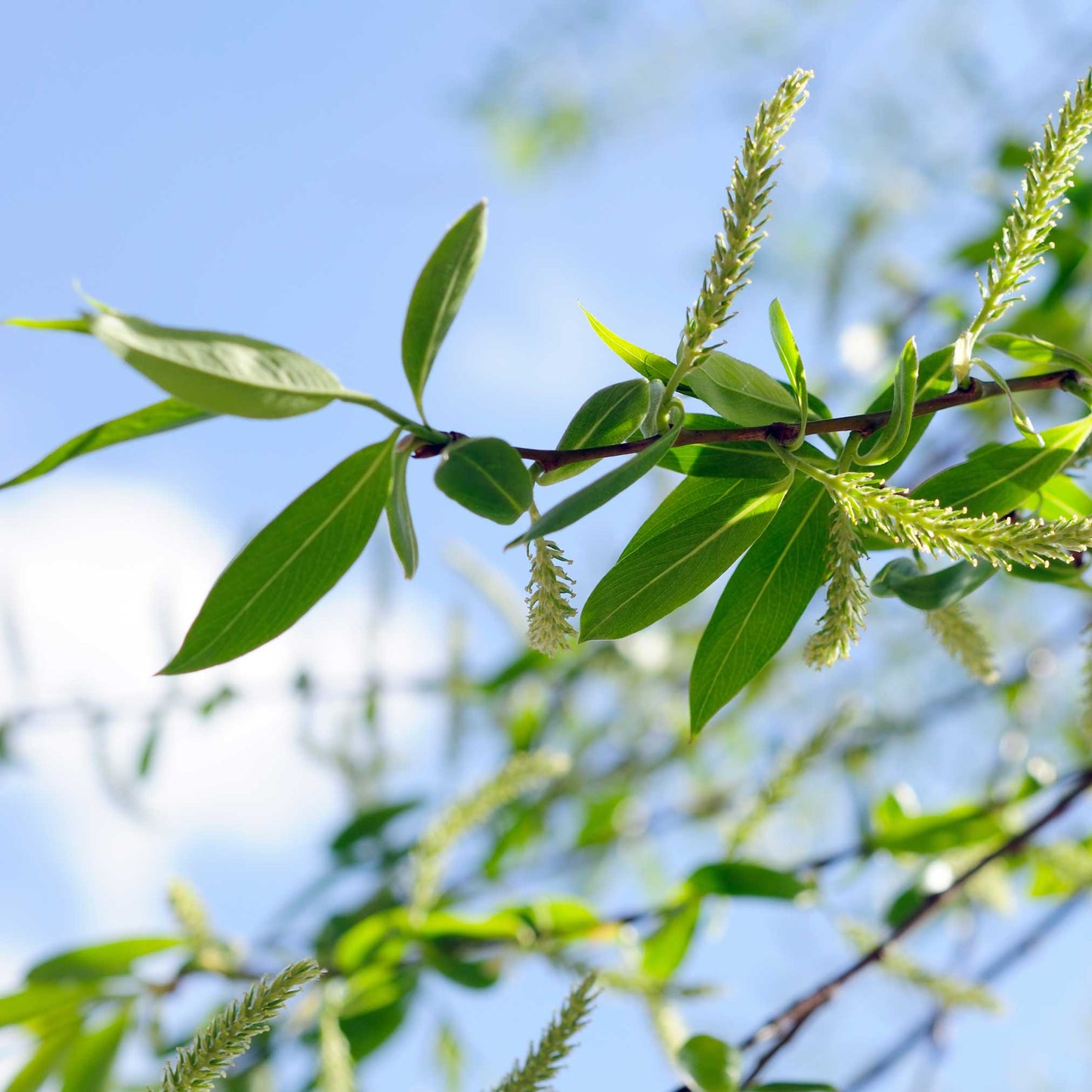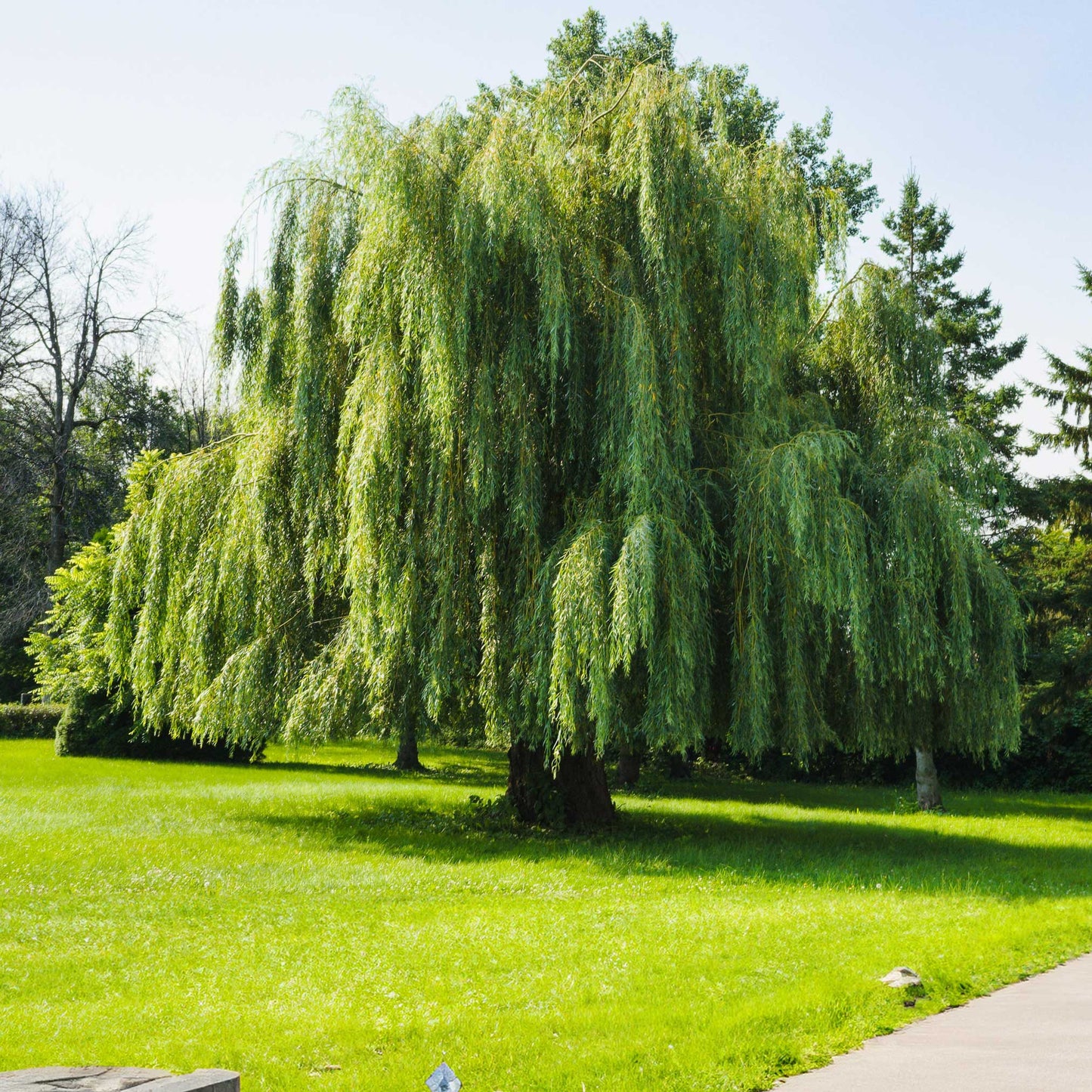Weeping Willow
Weeping Willow
SKU:DST-WIL-WEE-45-5G
Meet the Graceful Weeping Willow
Looking for a serene addition to your garden? The Weeping Willow is your perfect match! With its long, sweeping branches that dance gracefully in the breeze, this tree adds a touch of whimsy to any landscape.
Why You'll Love Your Weeping Willow
- Instant Charm: The Weeping Willow's elegant form is a quick way to add established charm to your garden, no matter the size.
- Natural Privacy: Its dense foliage creates a lush curtain of green, offering a cozy, private nook in your outdoor space.
- Wildlife Haven: Birds love to frolic among the branches, providing endless entertainment and a touch of wild beauty.
Easy Going and Low Maintenance
Don't worry about being a green thumb expert. The Weeping Willow is as laid-back as it looks. It's adaptable and can thrive in a variety of soil conditions, asking for nothing more than a sunny spot and a bit of water to flourish.
Bring Home Your Own Willow Wonder
Ready to elevate your garden's ambiance? The Weeping Willow is waiting to sweep you off your feet. Order yours today and transform your garden into an enchanting retreat that's sure to be the envy of the neighborhood!




Product Details
-
Product Category
Deciduous Trees
-
Product Subcategory:
Willows
-
Botanical Name:
Salix babylonica
-
Does Not Ship To:
AZ, OR
-
Mature Height:
30-50 ft.
-
Mature Width:
20-30 ft.
-
Growing Zone:
4-9 outdoors
-
Indoor Growing:
-
Sunlight:
Full-Part Sun
-
Growth Rate:
Fast
-
Harvest Time:
-
Bloom Time:

Planting Directions
<h2>Planting a Weeping Willow</h2>
<ul>
<li><strong>Choose a suitable location:</strong> Weeping willows need full sun and plenty of space. Select an area away from buildings and septic systems, as roots can be invasive.</li>
<li><strong>Soil requirements:</strong> They prefer moist, well-drained soil. Test the soil drainage by digging a hole and filling it with water. If it drains within a few hours, it's suitable.</li>
<li><strong>Planting:</strong> Dig a hole twice as wide and the same depth as the root ball. Place the tree in the hole, backfill with soil, and water thoroughly.</li>
<li><strong>Watering:</strong> Keep the soil consistently moist, especially during the first growing season to establish a strong root system.</li>
</ul>
<h2>Care and Maintenance</h2>
<ul>
<li><strong>Fertilization:</strong> Fertilize in early spring with a balanced fertilizer before new growth begins.</li>
<li><strong>Pruning:</strong> Prune in late winter or early spring to remove any dead or damaged branches.</li>
<li><strong>Pests and Diseases:</strong> Monitor for signs of pests or diseases and treat accordingly with appropriate fungicides or insecticides.</li>
</ul>
<p>Remember, weeping willows can grow quite large, so ongoing maintenance is crucial to ensure the tree remains healthy and does not become a hazard. Enjoy the graceful beauty of your weeping willow!</p>

FAQs
<h2>FAQs for the Weeping Willow Trees</h2>
<h2>1. How do I plant a Weeping Willow?</h2>
<ol>
<li><strong>Choose the right location:</strong> Weeping Willows need full sun to partial shade and plenty of room to grow due to their large size and extensive root system. Avoid planting near sewer lines or septic tanks.</li>
<li><strong>Prepare the soil:</strong> These trees prefer moist, well-drained soil. Amend the planting site with compost to improve soil fertility and structure.</li>
<li><strong>Dig a hole:</strong> Make the hole twice as wide as the root ball and just as deep. This gives the roots room to spread out.</li>
<li><strong>Plant the tree:</strong> Remove the tree from its container and gently loosen the roots. Place it in the hole, ensuring it's standing straight. Backfill the hole with soil, tamping down as you go to remove air pockets.</li>
<li><strong>Water thoroughly:</strong> After planting, water the tree generously to settle the soil around the roots and help with the initial stress of transplanting.</li>
</ol>
<h2>2. How often should I water my Weeping Willow?</h2>
<p><strong>Regular watering is crucial,</strong> especially for newly planted trees. Water your Weeping Willow deeply once a week, allowing the soil to become moist but not soggy. Mature trees are more drought-tolerant but still benefit from occasional deep watering during prolonged dry spells.</p>
<h2>3. What is the best fertilizer for a Weeping Willow?</h2>
<ul>
<li><strong>Young trees:</strong> Use a balanced, slow-release fertilizer in early spring to support growth. Look for a 10-10-10 or 20-20-20 NPK (Nitrogen, Phosphorus, Potassium) ratio.</li>
<li><strong>Mature trees:</strong> Fertilization may not be necessary if the tree is growing well. If growth seems sluggish, apply a balanced fertilizer in the spring.</li>
<li><strong>Soil testing:</strong> Consider having your soil tested to tailor the fertilization to the tree's specific needs, adjusting for soil deficiencies or excesses.</li>
</ul>
<h2>4. How do I prune a Weeping Willow?</h2>
<ol>
<li><strong>Timing:</strong> Prune in late winter or early spring when the tree is dormant to minimize stress and sap loss.</li>
<li><strong>Remove dead or damaged branches:</strong> This helps prevent disease and pests from entering the tree.</li>
<li><strong>Shape the tree:</strong> Trim back branches to maintain the desired shape and size of your Weeping Willow. Avoid heavy pruning, which can stress the tree.</li>
<li><strong>Thinning:</strong> Remove some interior branches to allow light and air to penetrate the canopy, improving the tree's health and vigor.</li>
</ol>
<h2>5. How do I deal with pests and diseases in Weeping Willows?</h2>
<ul>
<li><strong>Regular inspection:</strong> Check your tree frequently for signs of pests or disease, such as discolored leaves, unusual leaf drop, or visible insects.</li>
<li><strong>Proper care:</strong> Keeping your tree healthy with proper watering, fertilization, and pruning is the best defense against pests and diseases.</li>
<li><strong>Natural remedies:</strong> Use horticultural oils or insecticidal soaps to manage minor pest infestations. Always follow the product's instructions for the best results.</li>
<li><strong>Professional help:</strong> For serious or persistent problems, consult a certified arborist or local extension service for advice and treatment options.</li>
</ul>
<p>By following these guidelines, you can successfully plant and care for a Weeping Willow, enjoying its graceful beauty for years to come. Remember, patience and consistent care are key to growing a healthy and thriving tree.</p>





